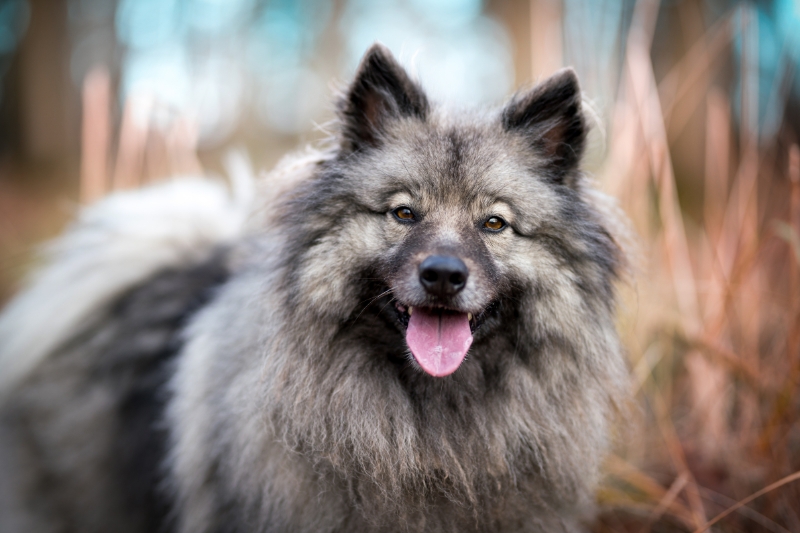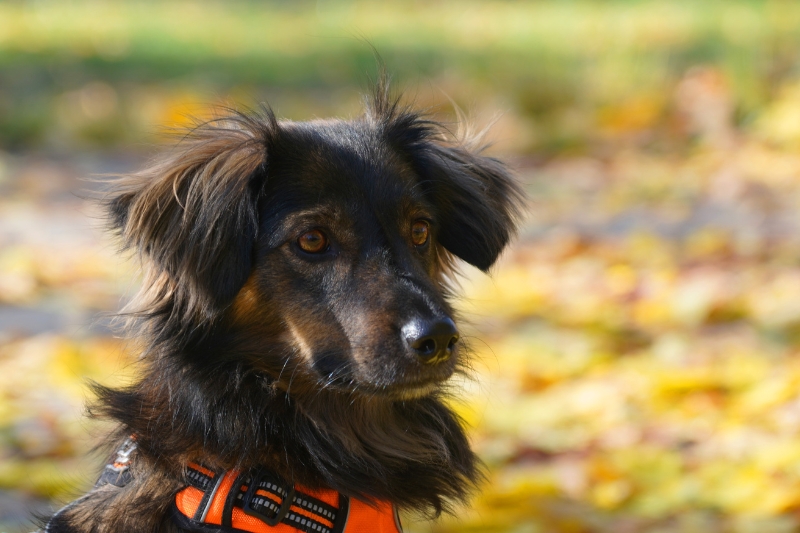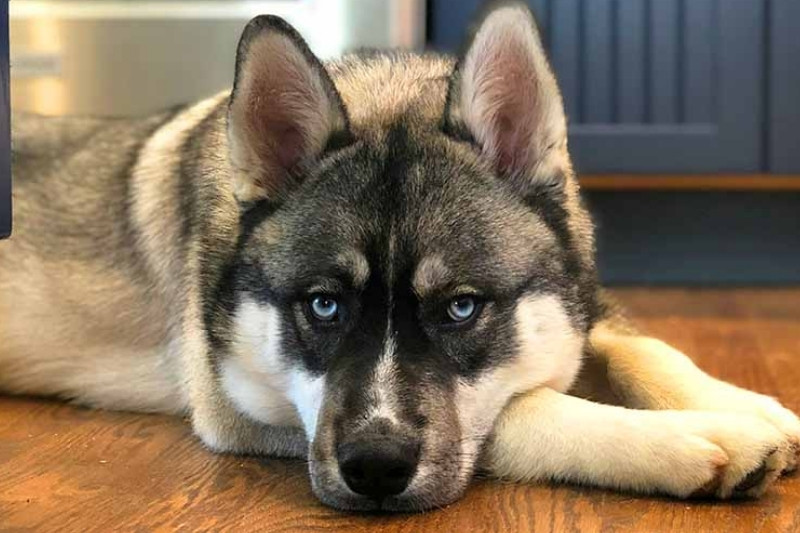11 Dutch Dog Breeds (With Pictures!)

It’s not often that we separate dog breeds into the country of origin (OK, minus the German Shepherd, the American Staffordshire Terrier, or the Dogo Argentino). But categorizing pups by country is a really fascinating way to get to know these breeds and their history in more detail. So, what are the Dutch dog breeds?
You may be able to guess a couple (*Dutch Shepherd*), but there are probably many on this list that you won’t know. And one might just be the perfect breed for you…
11 Amazing Dutch Dog Breeds
As with all dogs, it’s important to research the breed specifics and know exactly what you’re getting! You need to think about whether you can provide the dogs with everything they need, including space and exercise requirements. Here are some of the most important things to consider about these wonderful Dutch dog breeds.
Dutch Shepherd

Dutch Shepherds are dogs that really look like German Shepherds. They’re lively, very active, and extremely intelligent – so quite similar to the German Shepherd. These dogs weren’t first intentionally bred but rather occurred naturally on Dutch farms. They’re brilliant herding dogs and are built to run for hours in the fields.
They’re also often used by the military and police thanks to their strength, athleticism, and high intelligence. So, anyone wanting to adopt a Dutch Shepherd should be aware of their big exercise needs. They love to work and really enjoy pleasing their owners when they successfully complete their tasks.
If you’re going to adopt a Dutch Shepherd, you won’t just be getting a smart worker, you’ll also be getting a wonderful companion dog. They’re very loyal, affectionate, and protective of the humans they love most.
Keeshond

The Keeshond (plural Keeshonden) is the ultimate Dutch dog breed. The friendly, lively spitz-like dogs are family favorites across the country. These fluffy dogs look surprisingly like a much larger Pomeranian or a slightly smaller Samoyed. They have foxy faces, curvy tails, and lots of beautiful fur.
Keeshond are very intelligent dogs and enjoy training sessions. They respond well to positive reinforcement and love rewards. Keeshonden are active pups that need a good amount of daily exercise although they are very adaptable. In the past, they commonly lived on barge boats with very little space, so they’re actually a good fit for those in apartments too.
Even though this breed is very fluffy, they only require weekly brushing and a bath every 6 weeks. You might also want to trim their foot fur to stop it from getting too dirty.
Dutch Partridge Dog or Drentse Patrijshond

The Drentse Patrijshond, or Drent for short, is one of the most versatile dogs, and not just on this list. They were first bred on farms to do every job – from hunting and ratting to herding and hauling milk carts. They’re also great babysitters and love to spend time with children.
These pups are accepted with white coats and brown markings. They look very like Spaniels and are descendants of other Spanish dogs. The Drent is a fantastic herding dog and loves to hunt both fowl and larger animals. They’re also good retrievers (see, we told you they could do it all)!
This Dutch companion dog is very intelligent and excels in canine sports such as agility. They need lots of exercise and love being outdoors. They make great running and hiking partners and aren’t a great choice for those living in small homes or apartments.
Dutch Smoushond

The Dutch Smoushond isn’t a pup recognized by the American Kennel Club, but it does have a breed standard as laid out by the United Kennel Club. These brilliant Terrier dogs are hardly known outside of Holland but they’re popular within their own country.
If you’re looking for a medium-sized dog then this could be a great choice. Smoushonds are sweet, happy, and inquisitive dogs that are the perfect companion. In fact, in the past, they were even called ‘the Gentleman's dog’.
One of the most distinctive features of these dogs is their wonderful coats. They’re very wiry, straight, and – to be honest – look a little unkempt. But they’re super cute! The UKC accepts these dogs with a coat that’s all shades of yellow, but they particularly like dark straw-colored doggos. Some pups may also have darker eyebrows or a darker mustache.
Dutch Spaniel or Kooikerhondje

How stunning is this Dutch breed? The Kooikerhondje is a Spaniel-type dog that’s very active but not overly hyper. They’re friendly with people they know, like having a job to do, and love to spend most of their time exploring woods and fields around them.
If you adopt a Kooikerhondje, you won’t be getting the best guard dog ever, but they are very alert and will happily tell you when someone is approaching the house. They’re confident hunting dogs and therefore have quite a high prey drive. They don’t need a lot of training in the field but respond best to positive reinforcement in other areas.
These beautiful bouncy dogs are easily recognizable thanks to their red and white coats. They also have adorable black tufts of hair on their ears which make them look a little like Papillons!
Dutch Tulip Hound or Markiesje

Isn’t that such a beautiful name? This breed is another not yet recognized by the kennel clubs. But they are wonderful dogs and many people are working to change that! Some believe these dogs date back hundreds of years, although the breed club was first established in the 1970s, which leaves room for some confusion.
Dutch Tulip Hounds are small black dogs that have beautiful shiny coats. They’re also feathered around their tail and ears. Like other pups on the list, these dogs are distinctly Spaniel-like.
They’re very friendly dogs that get along with everyone. They’re good companions for children and love nothing more than to play. They’re sweet-natured and loyal, although they have been known to be clingy and separation anxiety may be a problem. They’re not a breed you can leave alone for long lengths of time.
Dutch Sheepdog or Schapendoes

These stunning pups are not to be confused with the Dutch Shepherd dog. In fact, they look nothing alike. These furry, gray dogs look like another favorite gray – the English Sheepdog. Dutch Sheepdogs are very loving and get on well with other canine friends. They may be a little timid to begin with but they soon warm up. They can also be good companions for kids they’ve grown up with.
These dogs were the number one herding breed in Holland in the 19th and 20th centuries. However, when Border Collies came on the scene, their numbers started to decline drastically. Through breeding efforts, numbers are on the rise again!
These dogs are lightly built but their shaggy coats make them look stockier than they are. They need regular exercise and plenty of time outdoors.
Saarloos Wolfdog

Are you looking for the ultimate wolf-like dog? Then the Saarloos Wolfdog could be the perfect breed. In fact, this breed is the result of mixing a male German Shepherd dog with a female wolf and further breeding the offspring.
These amazing dogs were bred to be companions rather than specific workers. They’re also not a recognized breed according to the AKC, but they were accepted by the UKC in 2006. They don’t just resemble a wolf, they share some character traits too. They’re very loyal but can get nervous in unknown situations and may even flee. They’re also very protective and like to guard their home and family.
Saarloos Wolfdogs can be many different colors including shades of brown and gray and entirely white. They can also have black skin points or liver.
Stabyhoun

The Stabyhoun is a fantastic family pet and a very good hunter and retriever. This is another of the Dutch dog breeds that looks a little like a large Spaniel. These pups can be black and white; brown and white; and orange and white and have a beautiful, sometimes feathered coat.
Stabyhouns are great soft-mouthed retrievers and are particularly good when it comes to waterfowl. Farmers also wanted to breed a dog that would hunt rats and other vermin, so digging can be an issue with these dogs. Lots of early training can help to stop the behavior.
These amazing dogs are great companions and love being with children. They’re inquisitive, playful, and very affectionate. They also learn very quickly and enjoy pleasing their owners, so training isn’t usually too difficult.
Frisian Water Dog or Wetterhoun

Wetterhouns are active, funny, intelligent, and sweet dogs that – surprisingly – love water! They were first bred to hunt otters and love to be jumping in and out of any form of pond or river. They’re very loyal to their owners and adore spending time with them. Wetterhouns are loyal and can be a little sensitive, which means they shouldn’t be firmly trained. They love to receive treats and praise from owners.
These pups can be either black or brown with white markings. They have an oily, curly coat that’s naturally water-resistant and which keeps them warm whatever the weather. They need daily physical and mental exercise to keep them happy and healthy, preferably around water!
Wirehaired Pointing Griffon or Korthals Griffon

Whether this pup can be on this list really depends on which expert you ask. Some think that these wonderful dogs are actually French. This is because the initial breeder, Eduard Korthals, further developed the breed in both Germany and France. Although he’s dutch and the first ones were definitely born in Holland.
His desire, like many noble men’s at the time, was to breed the perfect sporting dog. And he got pretty close. Wirehaired Pointing Griffons are excellent gun dogs and can retrieve on land and water. They’re also great company to have around. These medium-sized dogs are charismatic, affectionate, and willing to do almost any job.
As the name suggests, this Dutch breed has a very coarse, wiry coat that sheds minimally. They’re also famous for having large eyebrows and a mustache!
What Are The Origins of Dutch Dog Breeds?
There isn’t just one origin of all Dutch dog breeds. As you can see from this list, many dogs look very different and have developed from different breeds at different times. Some were bred to be working pups on farms and others to be sporting dogs or companions. There really is a variety!
What Are The Most Popular Dutch Dog Breeds?
It’s difficult to say which of all these beautiful pups is the most popular. That really depends on who you ask. It also depends on which country they are in. The Dutch Shepherd Dog and the Keeshond are arguably the most popular (or at least well-known) in America, however, other breeds are just as popular in Holland and Europe.
What Are The Rarest Dutch Dogs?
Unfortunately, there are a couple of very rare Dutch dog breeds. Both the Stabyhoun and Kooikerhondje are extremely rare – and not just for Dutch breeds. It might take a very long time for you to find a responsible breeder with puppies of either of these breeds.
Last Thoughts
There’s a huge variety when it comes to Dutch dog breeds. There are small, large, sporting, and companion dogs to choose from. Whichever breed you end up going for, make sure that they will fit in with your lifestyle and that you can give them everything they need.
Also, research responsible dog breeders in your area (or in Holland!) and never contribute to puppy farms. Having a canine friend in your home is a privilege and giving them all the love and care you can is a must!
I’m Charlotte, a content and copywriter from the North of England and currently living in Berlin. Animals have always been a huge part of my life, so writing about dogs is a total pleasure! I love all kinds of dogs and their cheeky personalities, but I’d have to say Weimaraners are my favourite!







